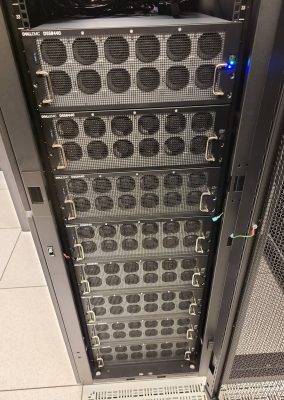Professor Shikha Nangia Named as the Milton and Ann Stevenson Endowed Professor of Biomedical and Chemical Engineering
The College of Engineering and Computer Science (ECS) has announced the appointment of Shikha Nangia as the Milton and Ann Stevenson Endowed Professor of Biomedical and Chemical Engineering. Made possible by a gift from the late Milton and Ann Stevenson,…


 The Research Computing team originally launched in 2011 to address a gap: There were no central research computing resources or capabilities to help faculty members who needed something beyond their desktop computer or what was available in their lab. ITS utilized and combined some existing resources, such as OrangeGrid, which securely scavenged compute time from idle desktops, and the Academic Virtual Hosting Environment from an existing investment in disaster recovery, to provide campus researchers something that could assist with challenging and compute-intense academic work.
The Research Computing team originally launched in 2011 to address a gap: There were no central research computing resources or capabilities to help faculty members who needed something beyond their desktop computer or what was available in their lab. ITS utilized and combined some existing resources, such as OrangeGrid, which securely scavenged compute time from idle desktops, and the Academic Virtual Hosting Environment from an existing investment in disaster recovery, to provide campus researchers something that could assist with challenging and compute-intense academic work.